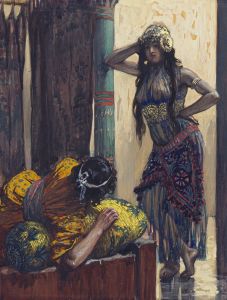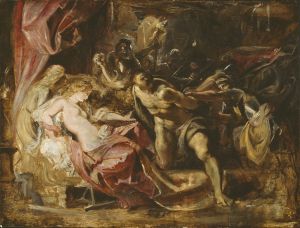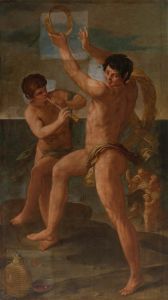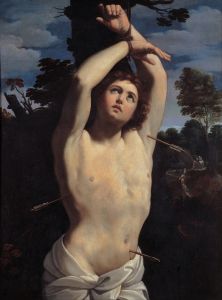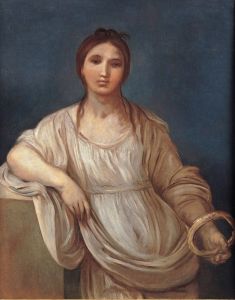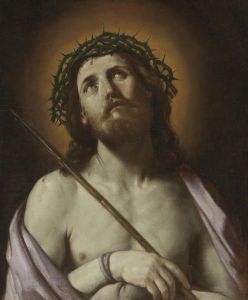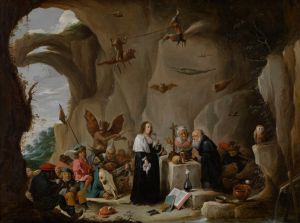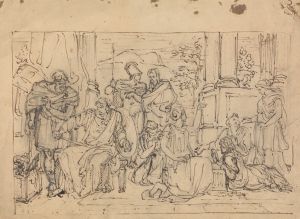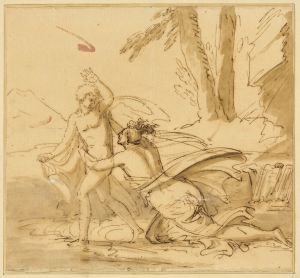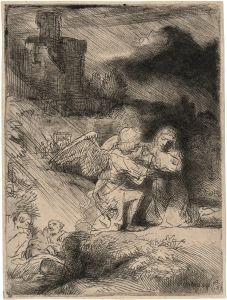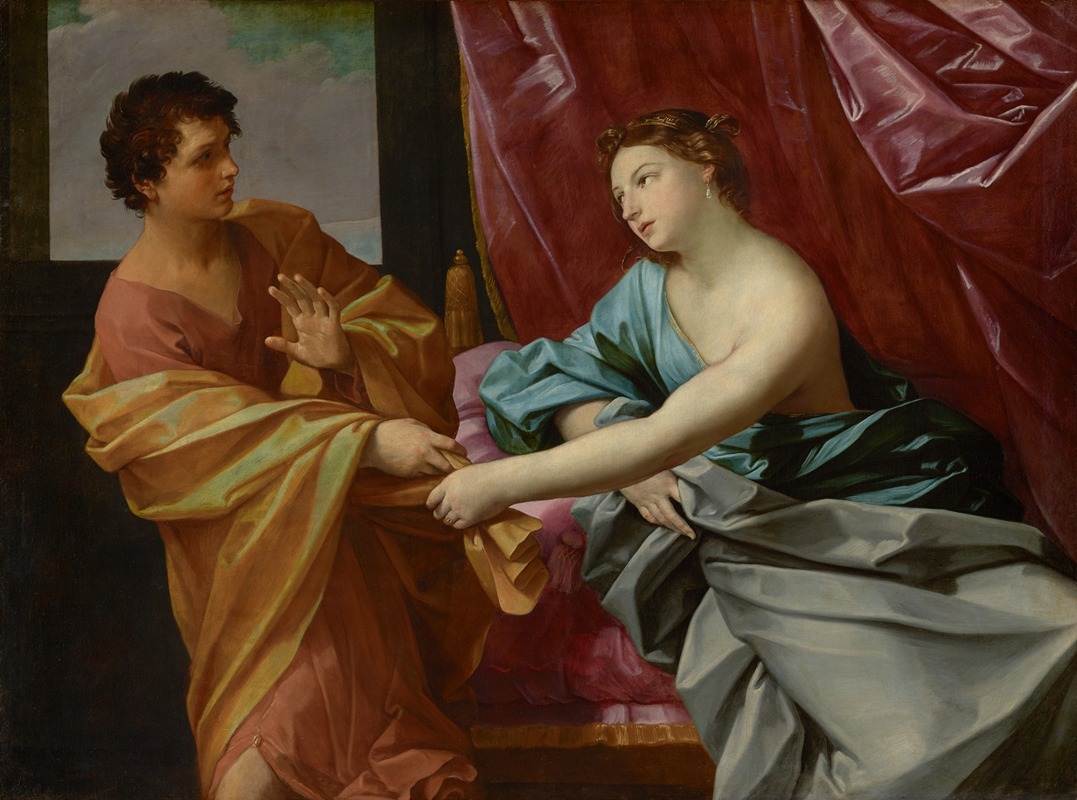
Joseph and Potiphar’s Wife
A hand-painted replica of Guido Reni’s masterpiece Joseph and Potiphar’s Wife, meticulously crafted by professional artists to capture the true essence of the original. Each piece is created with museum-quality canvas and rare mineral pigments, carefully painted by experienced artists with delicate brushstrokes and rich, layered colors to perfectly recreate the texture of the original artwork. Unlike machine-printed reproductions, this hand-painted version brings the painting to life, infused with the artist’s emotions and skill in every stroke. Whether for personal collection or home decoration, it instantly elevates the artistic atmosphere of any space.
"Joseph and Potiphar’s Wife" is a painting by the renowned Italian Baroque artist Guido Reni. Created around 1630, this artwork is a significant representation of the biblical story of Joseph and Potiphar's wife, which is found in the Book of Genesis, chapter 39. The narrative depicts the moment when Joseph, a Hebrew servant in the house of Potiphar, an Egyptian officer, resists the advances of Potiphar's wife, who subsequently accuses him of attempting to seduce her, leading to his imprisonment.
Guido Reni, born in Bologna in 1575, was a prominent figure in the Baroque period, known for his classical approach and graceful style. His works often reflect a blend of dramatic intensity and serene beauty, characteristics that are evident in "Joseph and Potiphar’s Wife." Reni's ability to convey emotion and narrative through his compositions and use of color has earned him a distinguished place in art history.
In "Joseph and Potiphar’s Wife," Reni captures the tension and drama of the biblical episode with remarkable skill. The painting portrays Joseph as he turns away from Potiphar's wife, who is depicted reaching out to him. The composition highlights the moral and emotional conflict of the scene, with Joseph's expression and posture conveying his determination to resist temptation and maintain his integrity. The use of light and shadow in the painting enhances the dramatic effect, a technique characteristic of Baroque art.
Reni's depiction of Potiphar's wife is both alluring and commanding, reflecting her role in the story as a figure of temptation and false accusation. The contrast between her assertive gesture and Joseph's defensive stance underscores the central theme of virtue tested by seduction. The artist's attention to detail, from the textures of the fabrics to the expressions on the characters' faces, adds depth to the narrative.
The painting is also notable for its composition and use of space. Reni employs a dynamic arrangement that draws the viewer's eye across the canvas, emphasizing the interaction between the two figures. The background is kept relatively simple, ensuring that the focus remains on the central characters and their dramatic encounter.
"Joseph and Potiphar’s Wife" is housed in the Louvre Museum in Paris, where it continues to be admired for its artistic excellence and narrative power. The painting is a testament to Reni's mastery of the Baroque style and his ability to convey complex human emotions through his art. It remains an important work for both its artistic merit and its interpretation of a timeless biblical story.
Overall, Guido Reni's "Joseph and Potiphar’s Wife" exemplifies the artist's skill in combining narrative clarity with emotional depth, making it a significant piece in the study of Baroque painting and biblical art.





